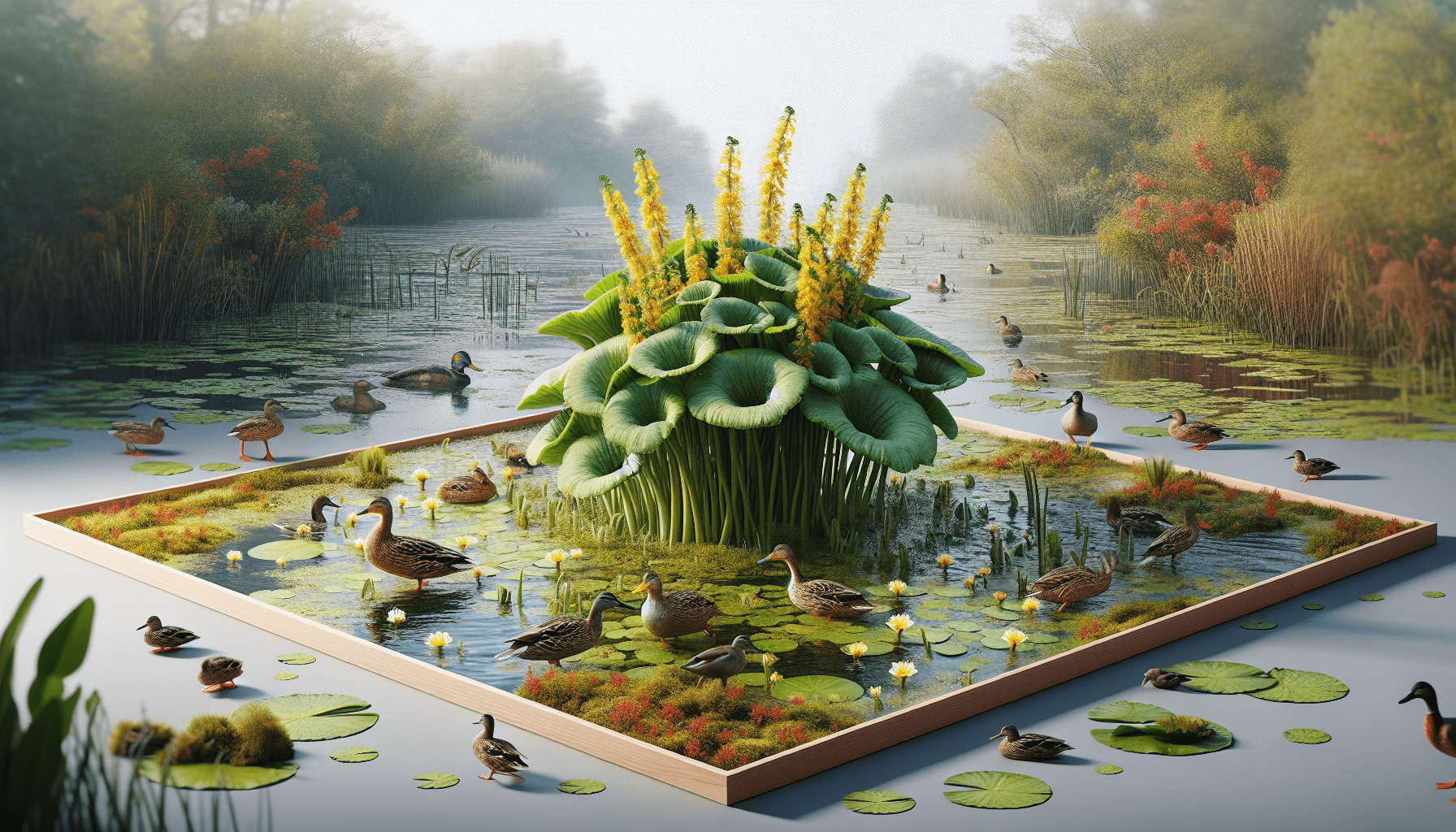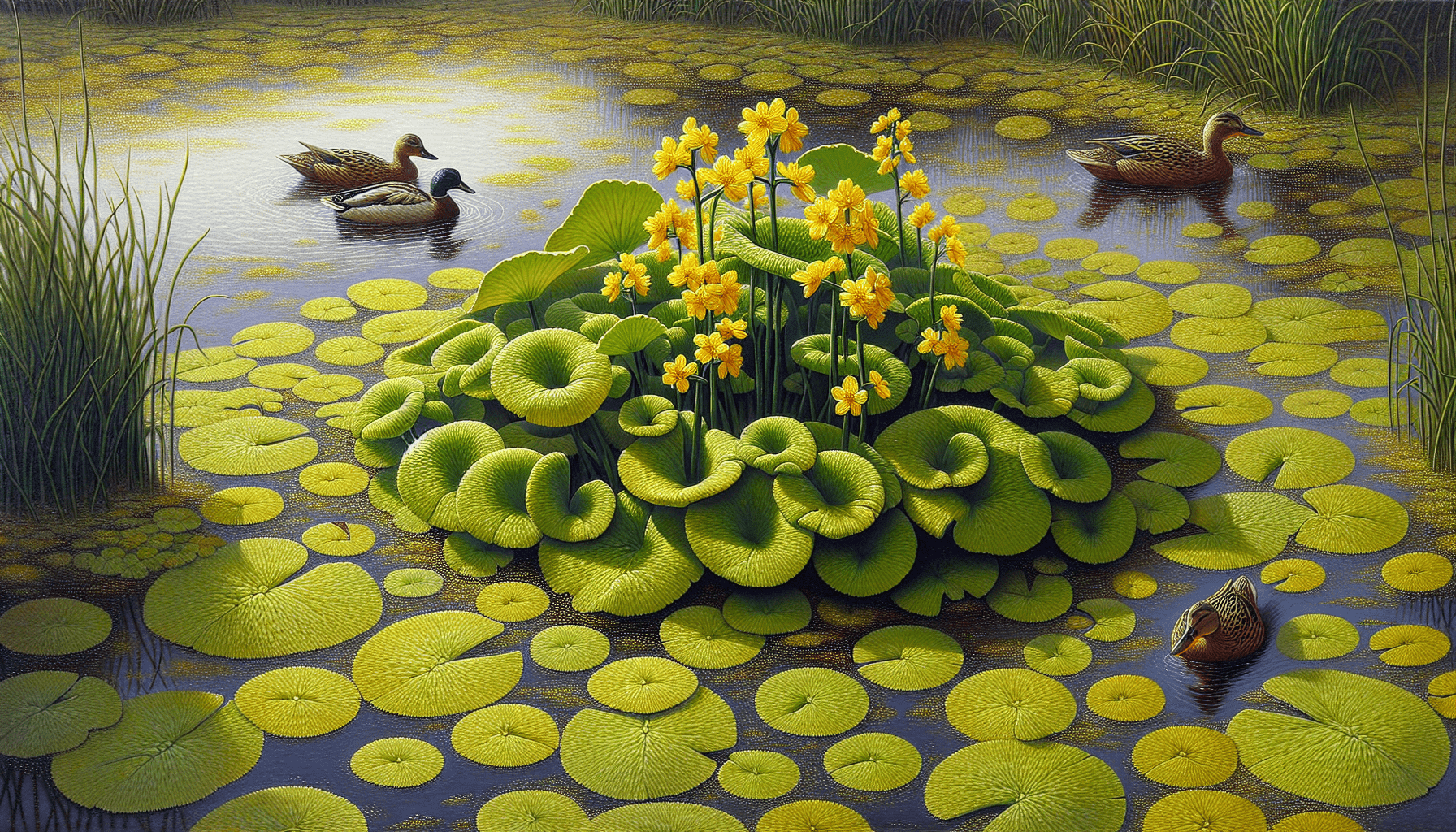In the enthralling world of aquatic flora, a certain botanical marvel known as the Spatterdock plays a vital role, and it is the main focus of this article. This phenomenal plant is an essential component of many thriving aquatic ecosystems, with its presence enhancing both the biodiversity and the aesthetic appeal of its environment. As you navigate through this article, you will encounter a broad array of information about the Spatterdock – ranging from its distinctive biological characteristics, to its ecological functions, to its potential uses in human society, thus, contributing to your comprehensive understanding of this unique water-loving vegetation.

Overview of Spatterdock
Spatterdock, a curious and alluring name for a plant that you may notice thriving in aquatic settings. A first glance, especially for the untrained eye, might overlook it as a simple water lily, but the spatterdock upholds its uniqueness within the Nuphar genus.
Definition of Spatterdock
Spatterdock, known by various names, such as cow lily, yellow pond-lily or water lily, is a perennial aquatic flowering plant, predominantly native to North America and parts of Eurasia. Its scientific name, Nuphar lutea, stems from the Old Norse ‘Núpar’ referring to its classification under the Nuphar genus.
Scientific Classification of Spatterdock
From a scientific standpoint, the Spatterdock belongs to the plant kingdom (Kingdom Plantae) and falls in the flowering plant division, Angiosperms. It belongs to the order Nymphaeales, that comprises the water-lily group of plants. Its family, Nymphaeaceae, houses water lilies with its genus being Nuphar. The species name is lutea, often referring to the yellow color of its flowers.
Physical Characteristics of Spatterdock
The fascination with Spatterdock extends beyond its commonality within aquatic landscapes, bringing attention to its distinctive physical characteristics.
Appearance of the Entire Plant
The miraculously resilient Spatterdock displays an array of long-stalked, floating leaves, extending from underwater rhizomatous stems. The plant’s floating canopy typically ranges from one to three feet.
Details about Leaves
Its leaves reveal an excellent adaptation for its pond-life existence, wherein they are waxy-coated to repel water. These leaves, varying in range from a dark green to almost brown, appear to have a heart shape and are about 6 to 12 inches wide.
Description of Flowers
Spatterdock flowers, unlike many of their botanical peers, bloom directly on the water’s surface. They exhibit a conspicuous yellow coloration with a globular shape. Interestingly, these flowers are not seen to completely open but retain a wrapped, bud-like appearance.
Information about Seeds
Each Spatterdock flower that is successfully pollinated develops into a bottle-shaped fruit containing a myriad of seeds. These seeds, upon maturity, are released into the water body to signal the start of the plant’s propagation process.
Habitat and Distribution of Spatterdock
Geographical Regions of Presence
Spatterdock flaunts strong ecological plasticity, extending its presence across an impressive array of geographic regions. They are most commonly found in the eastern and central parts of North America, extending into parts of Eurasia.
Types of Water Bodies they Colonize
Being an aquatic plant, Spatterdock favours water bodies with slow or non-moving water. They colonize a range of aquatic habitats including ponds, lakes, marshes, and swamps but keep a safe distance from swiftly moving rivers or streams.

Life Cycle and Reproduction of Spatterdock
Seed Germination
The Spatterdock’s life cycle, akin to a story worth telling, starts with the released seeds. These seeds, immersed in water, slowly begin their germination process, with the developing seedlings forming roots that attach to the muddy or silty bottom.
Growth Stages
Once the seedlings establish themselves, they continue to grow into a full-fledged plant. The plant expects a life span of several years, undergoing seasonal changes like leaf senescence during the winter months.
Flowering and Pollination
Spatterdock typically initiates flowering in the late spring and continues till early fall. The flowers attract a variety of insects for pollen transfer, facilitating their outcrossing nature of reproduction.
Seed Production and Dispersal
Once pollination concludes, seed production ensues. The ripened fruit releases seeds upon dehiscing, starting a new cycle of seed germination and plant development.
Ecological Roles of Spatterdock
Their Effect on Water Quality
Spatterdock, by virtue of its photosynthetic activity, contributes to oxygenation of water bodies, impacting overall water quality. Additionally, their root systems stabilize the sediment, reducing erosion and improving the turbidity of the water.
As Habitat for Aquatic Fauna
Spatterdock offers shelter and breeding grounds for various aquatic life forms such as fish, frogs and insects. The plant structure even aids smaller aquatic organisms by providing a substrate for attachment.
Their Role in Aquatic Food Chain
Spatterdock plays a crucial role in the aquatic food chain, serving as a food source for numerous species, including waterfowl, turtles, and some mammals.
Contribution to Biodiversity
The presence of Spatterdock contributes to biodiversity within a water body by supporting a vast array of aquatic organisms and maintaining overall aquatic health.
Human Uses of Spatterdock
Culinary Uses
Spatterdock seeds have been used as a source of food, ground into flour or popped like popcorn. Young leaves and rootstocks have also been consumed by humans.
Medicinal Uses
Historically, parts of the Spatterdock plant were used in folk medicine for treating various ailments, such as heart conditions, swelling and skin issues.
Landscape and Aesthetic Value
With their lush green leaves and vibrant yellow flowers, Spatterdock serve as excellent additions to water gardens and freshwater ponds, enhancing the aesthetic value.
Cultivation and Care of Spatterdock
Ideal Water Conditions
Spatterdock, true to its aquatic nature, thrives in waterlogged conditions and prefers shallow, quiet waters with a muddy bottom.
Sunlight Requirements
These plants are avid sun-lovers and require full sun exposure for optimal growth.
Soil Preferences
The Spatterdock prefers a rich, muddy or silty soil to anchor their extensive root systems.
Propagation Techniques
Spatterdock is normally propagated by division of their rhizome or via seed germination.
Potential Problems with Spatterdock
Invasive Potential
Spatterdock, due to their strong growth and colonization, may become invasive in certain conditions, outcompeting native plants.
Susceptibility to Pests and Disease
Despite seeming invulnerable, Spatterdock can succumb to various pests and diseases. It may be susceptible to leaf-eating insects, and fungal or bacterial pathogens.
Possible Damage to Human Infrastructure
In certain situations, the vigorous growth of Spatterdock may pose threats to human-made structures by blocking waterways or impacting recreational activities.
Conservation and Management of Spatterdock
Conservation Status
Spatterdock, being widespread and common, does not face immediate threats to its survival, however, local changes can impact its distribution.
Threats to Their Survival
Spatterdock may face threats from habitat destruction, pollution, and the introduction of invasive species.
Conservation Efforts
While not endangered, efforts to conserve their habitats can benefit not just the Spatterdock but the entire ecosystem.
Management and Control Methods
Where invasive, the management of Spatterdock involves physical removal or the use of appropriate herbicides.
Research and Studies on Spatterdock
Noteworthy Research Findings
Studies have shown that Spatterdock may have potential medicinal value, particularly in the context of anti-inflammatory and antimicrobial properties.
Ongoing Studies and their Objectives
Current research pursuits are exploring Spatterdock’s ecological roles, particularly in nutrient cycling and the potential for phytoremediation.
Contribution to Science and Biodiversity Studies
Spatterdock, as a model organism, contributes to our understanding of aquatic ecosystems, their biodiversity, and ecological functions.